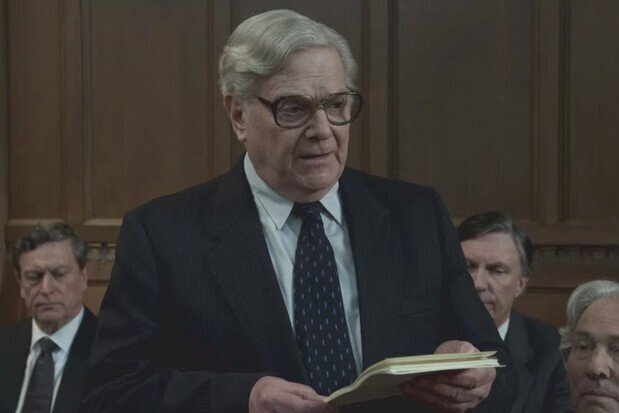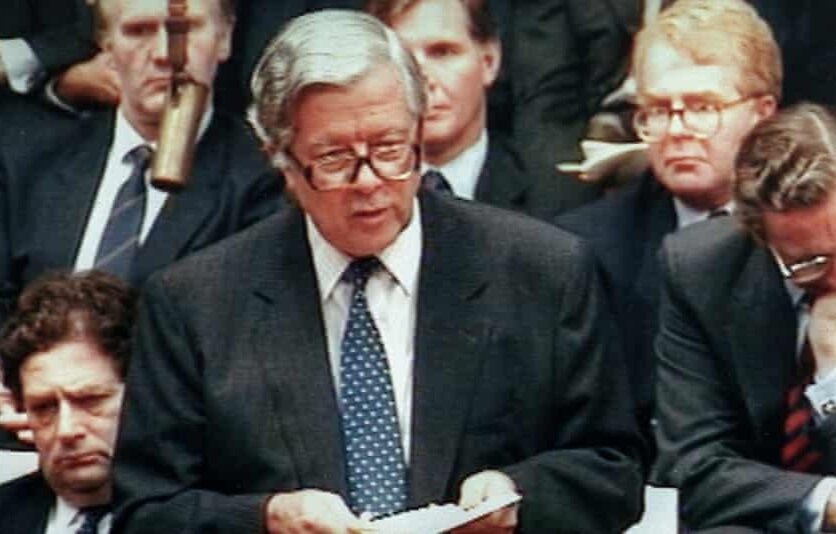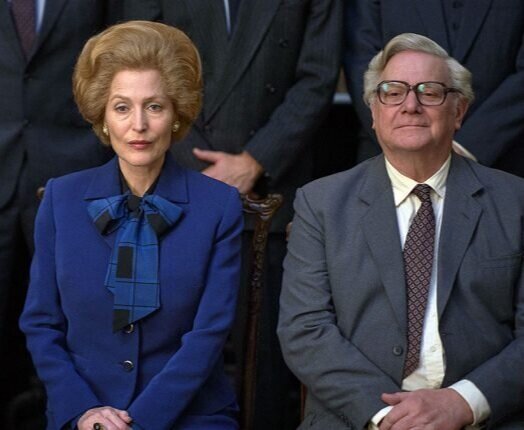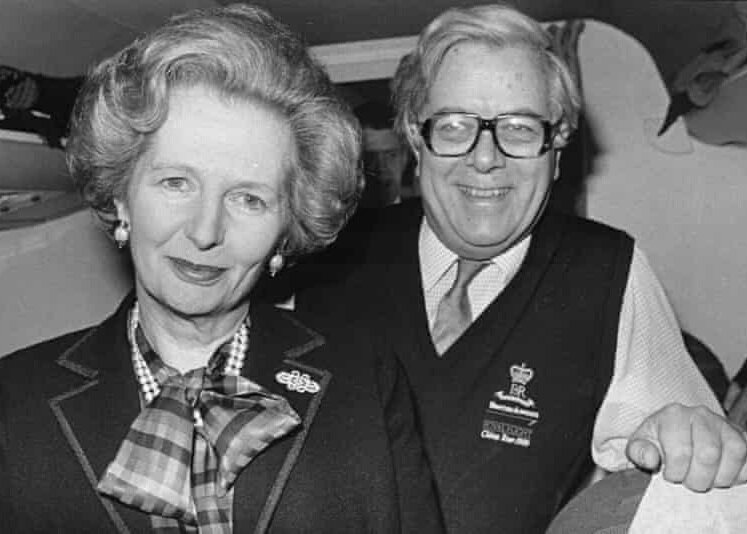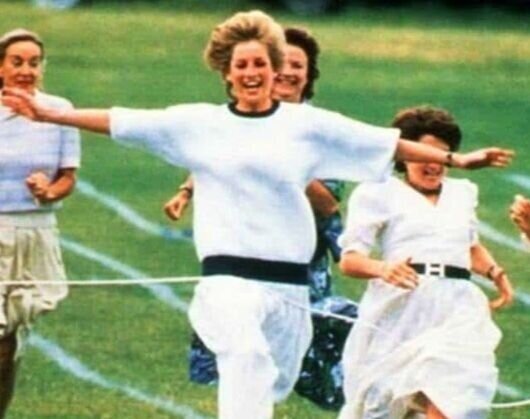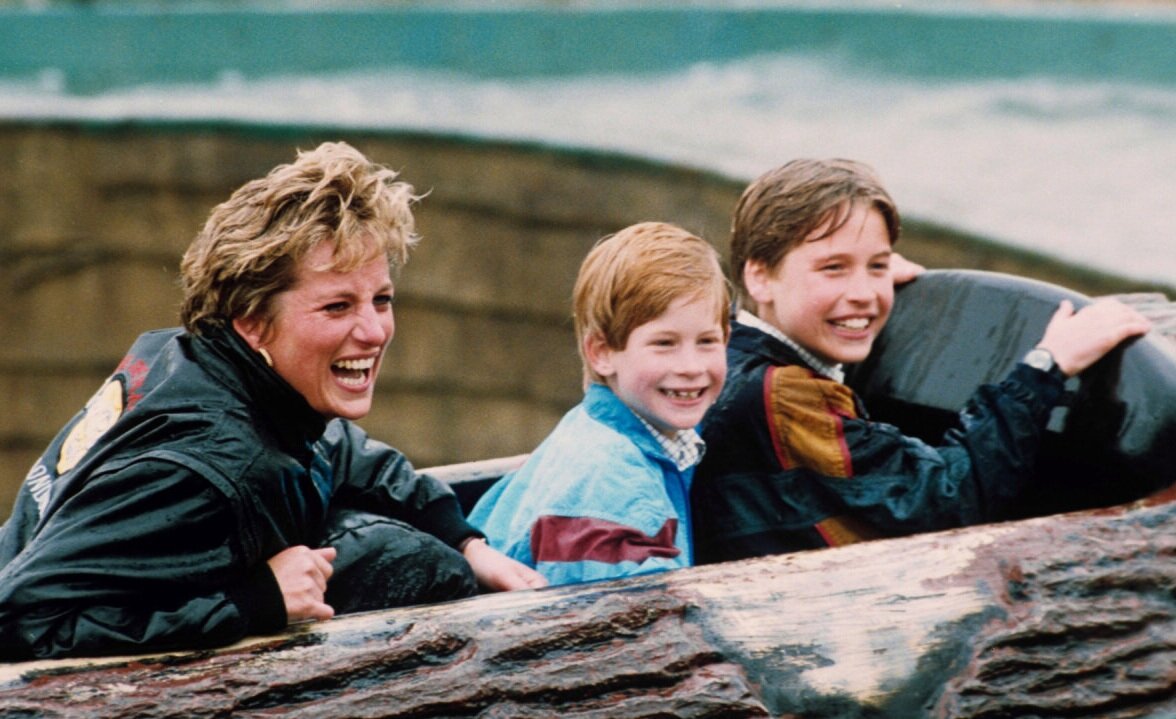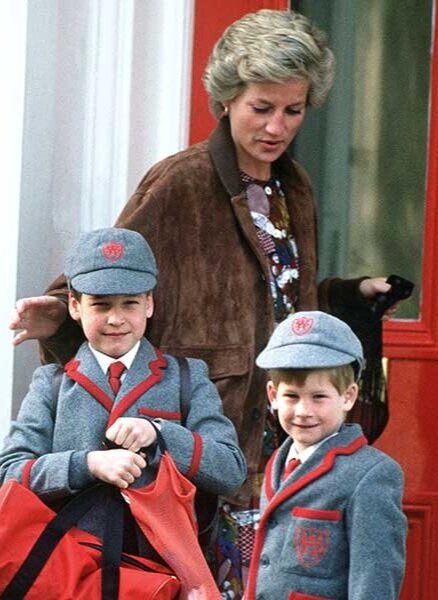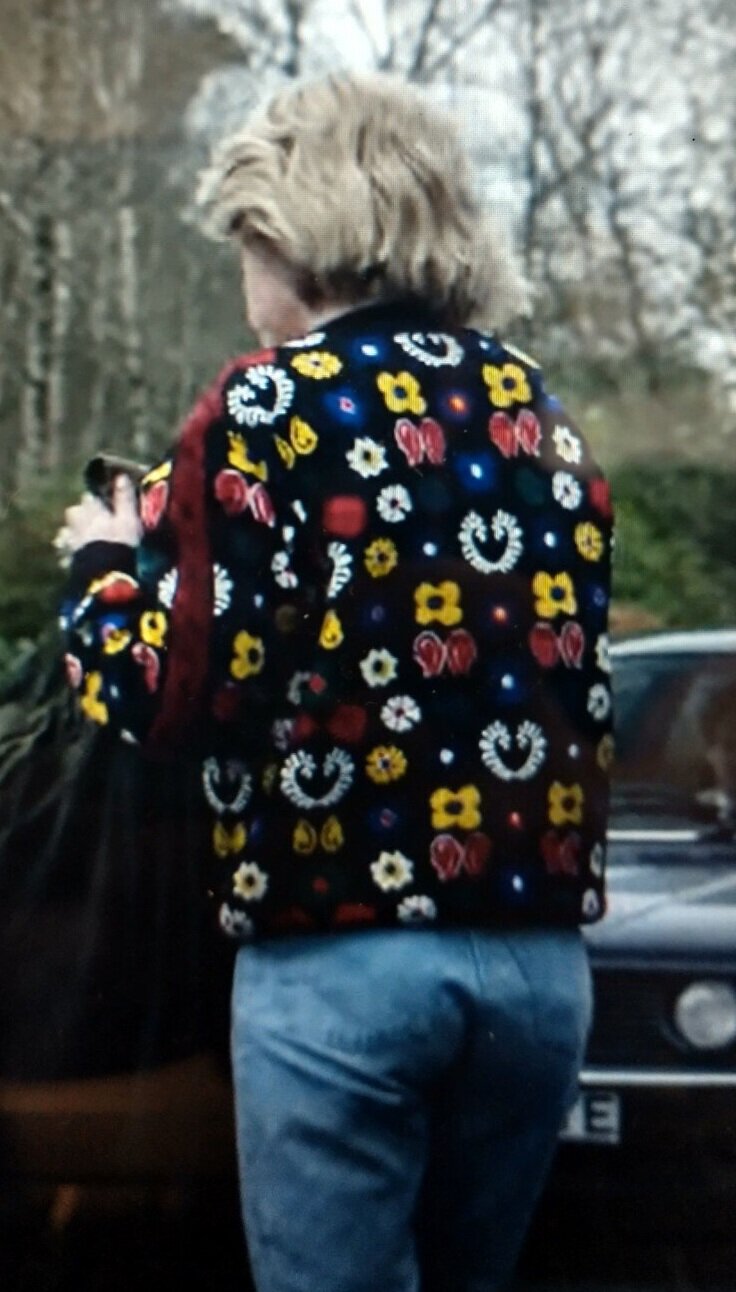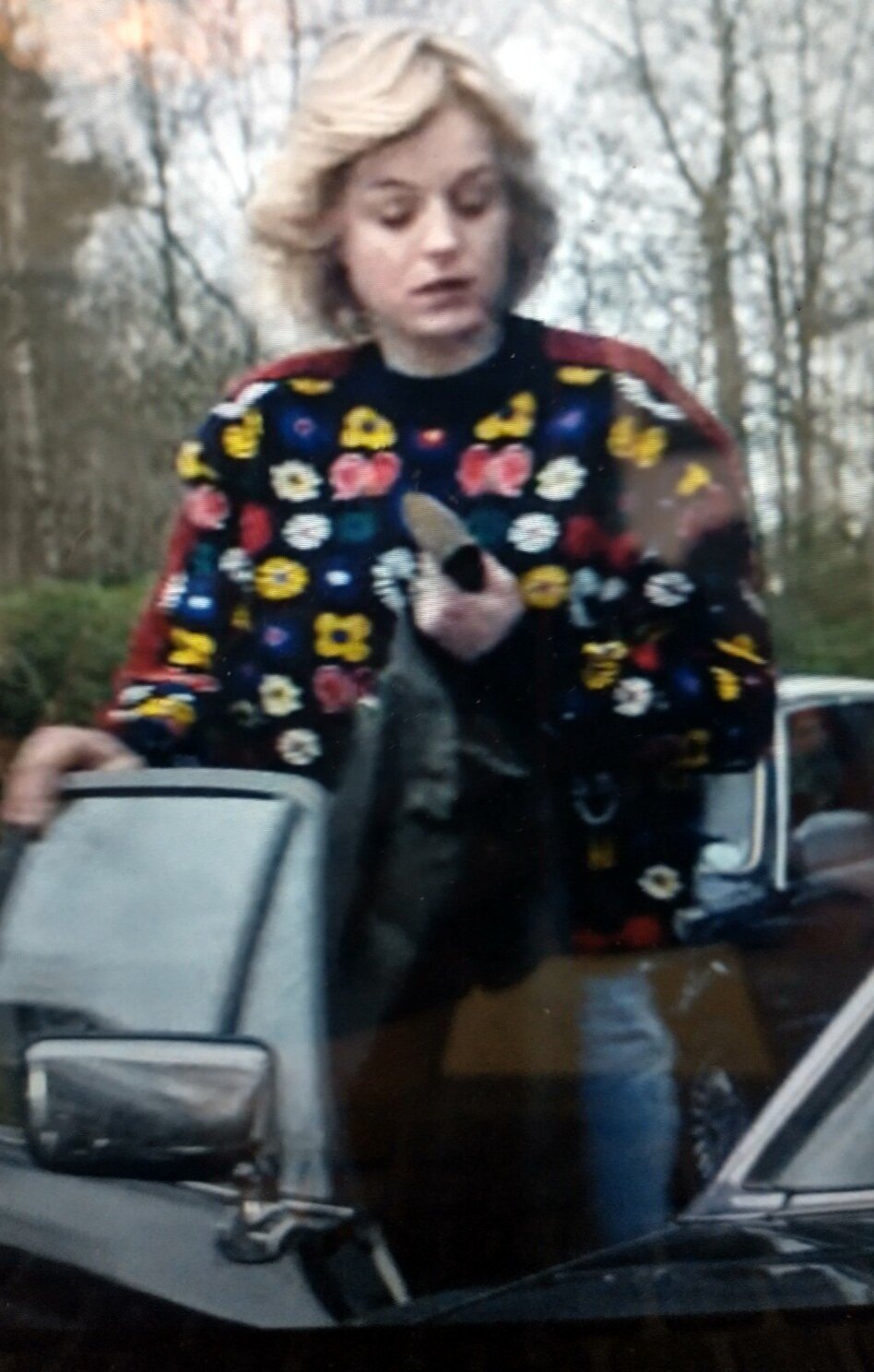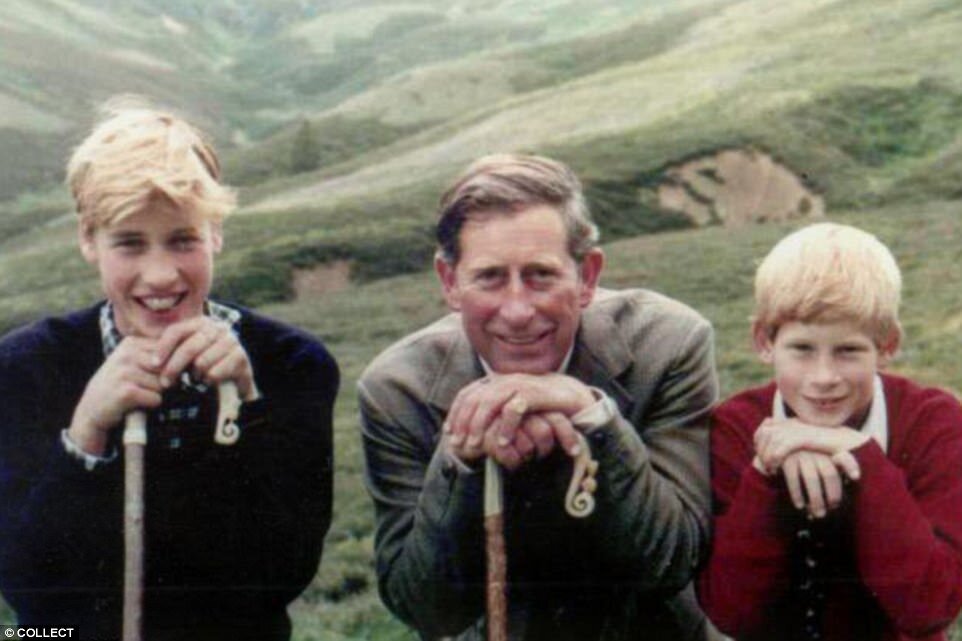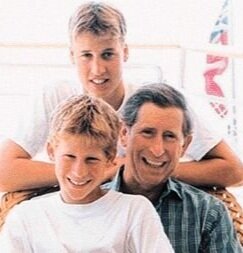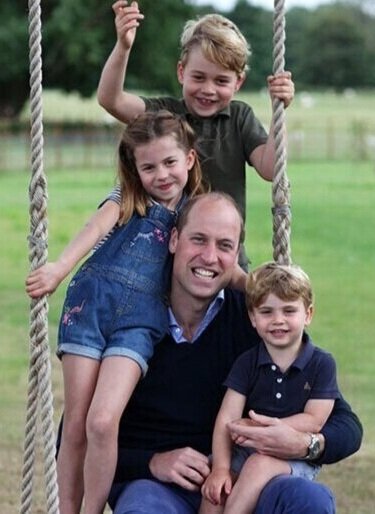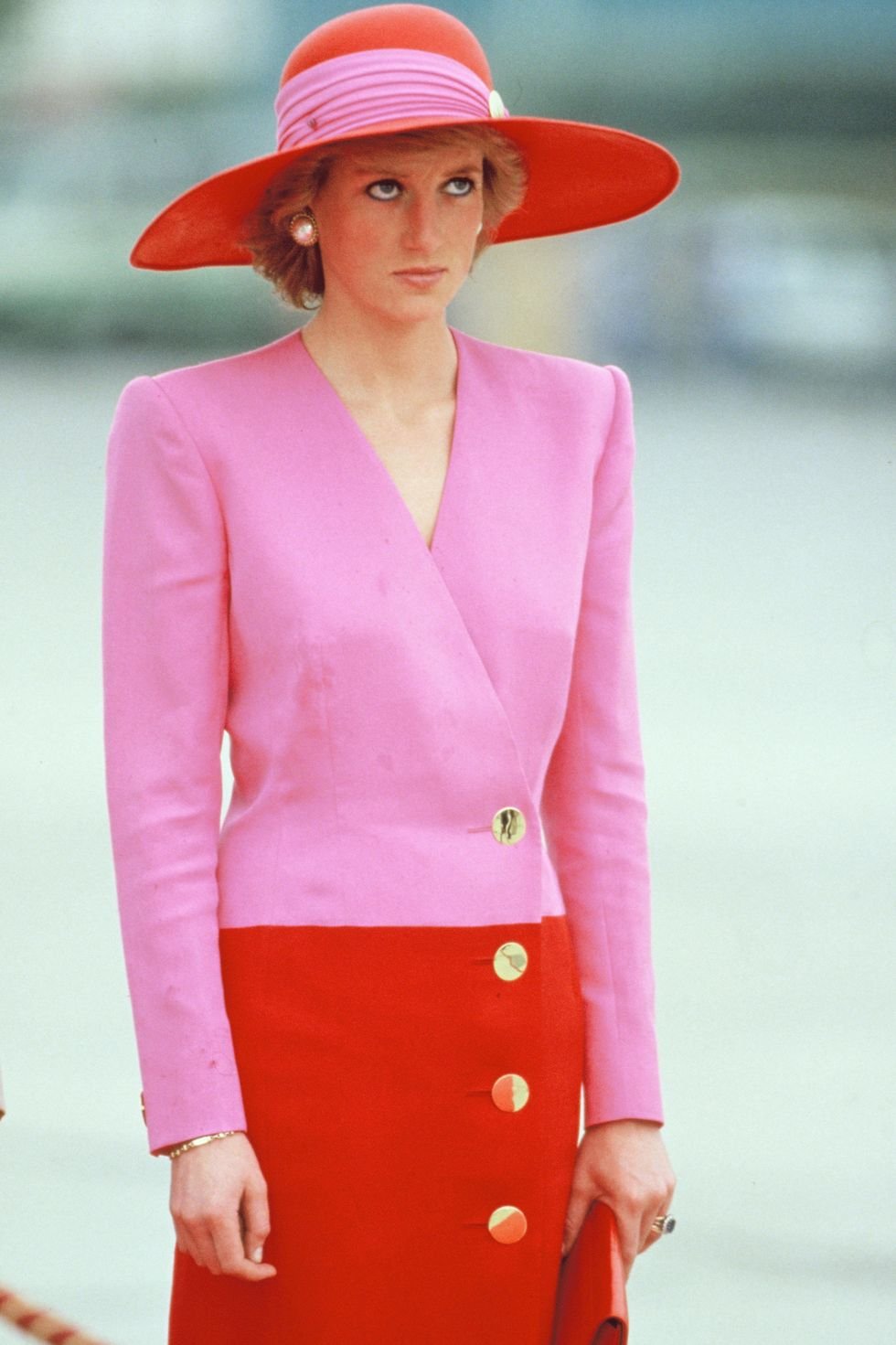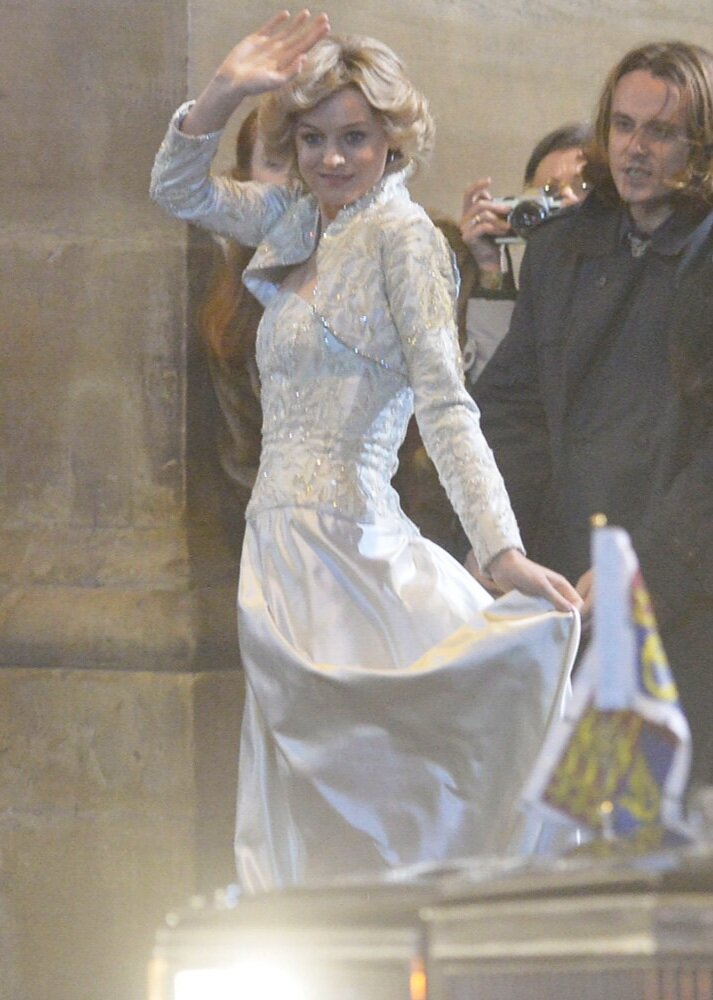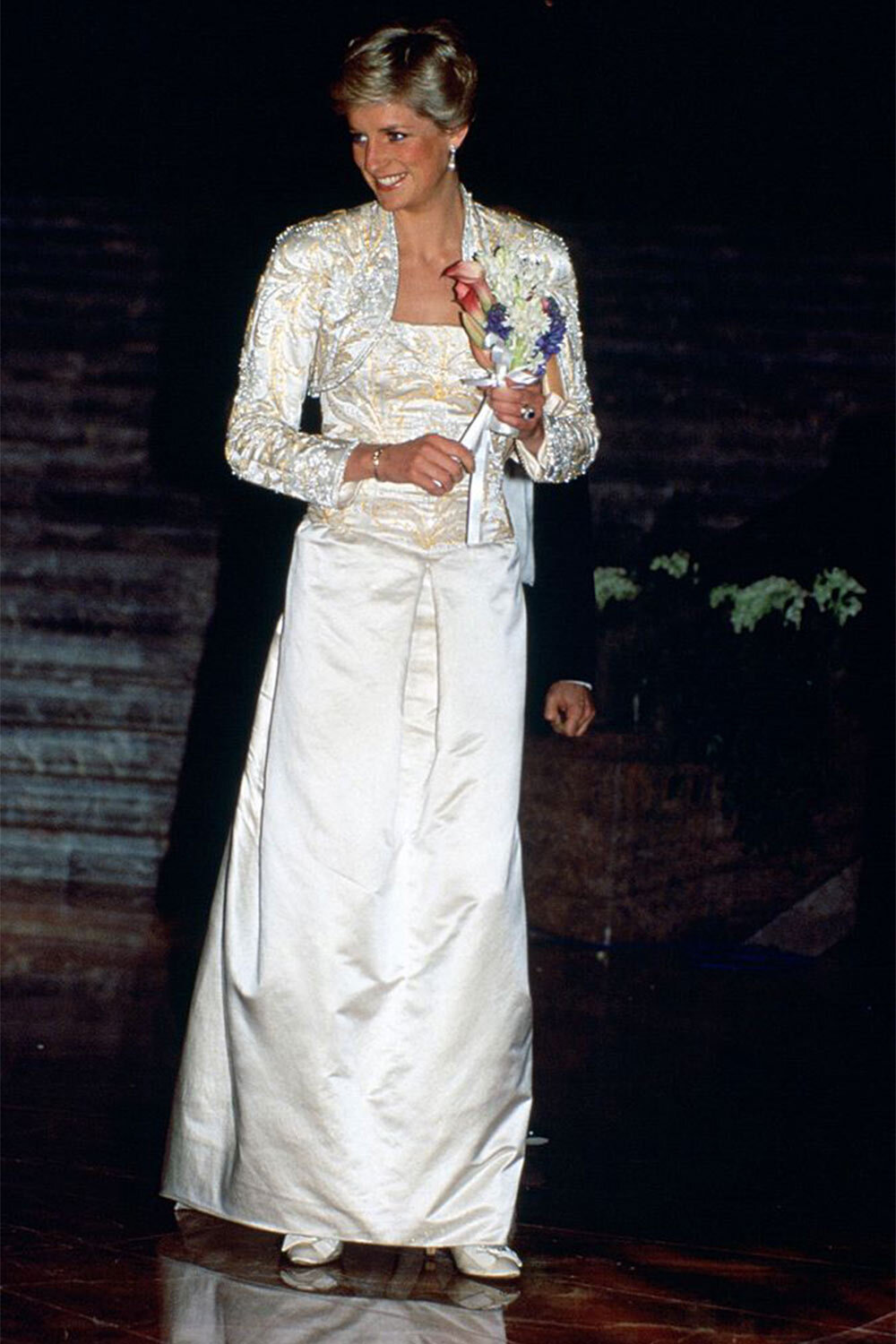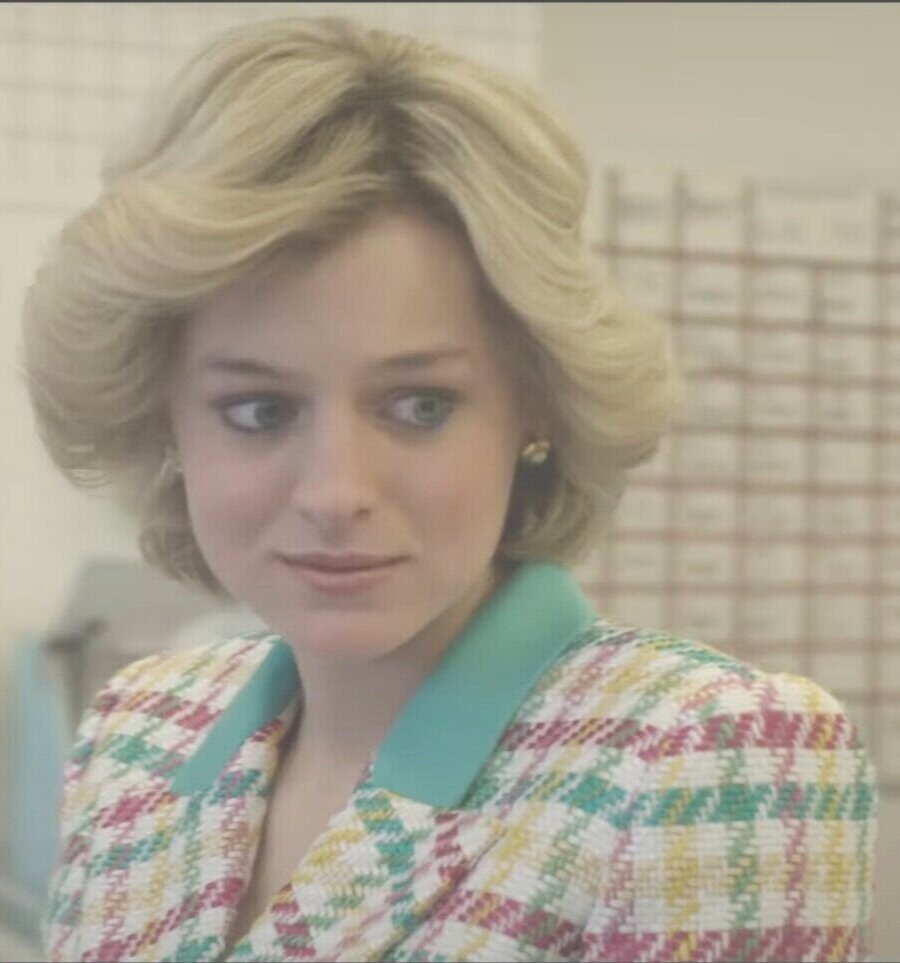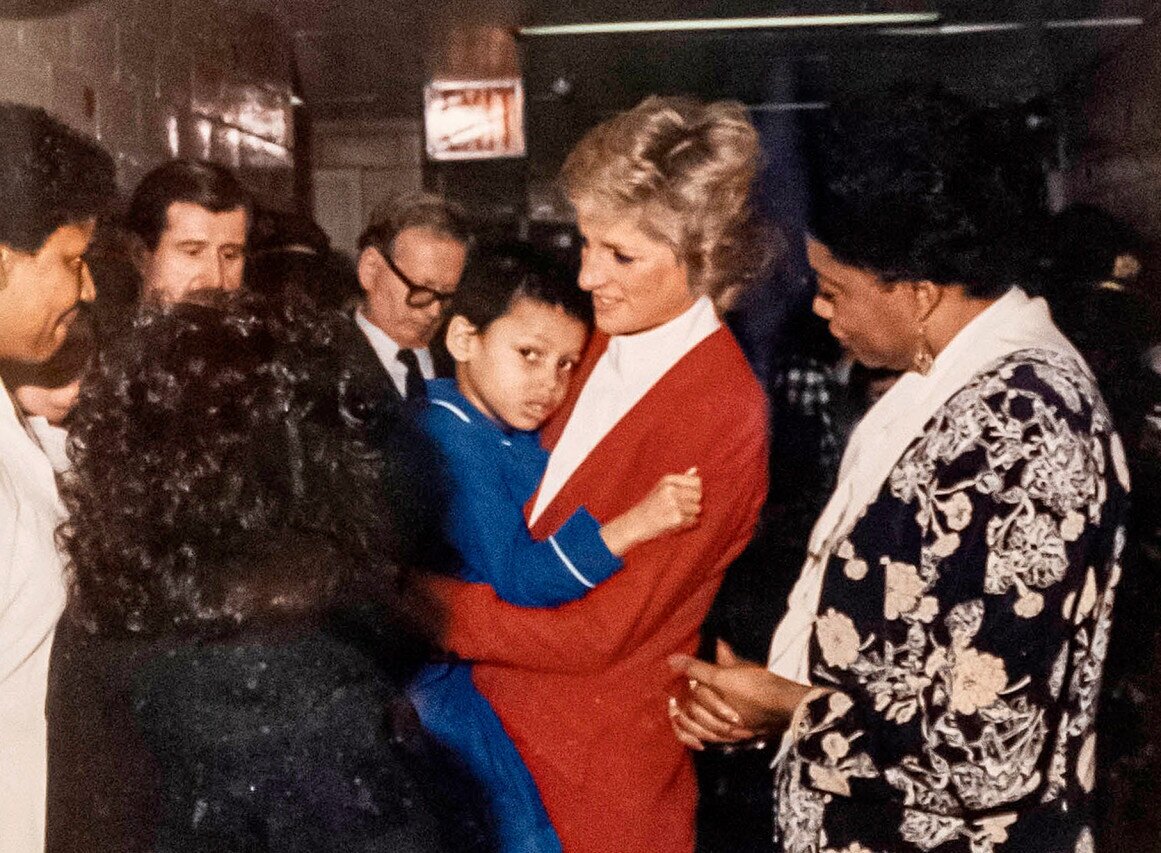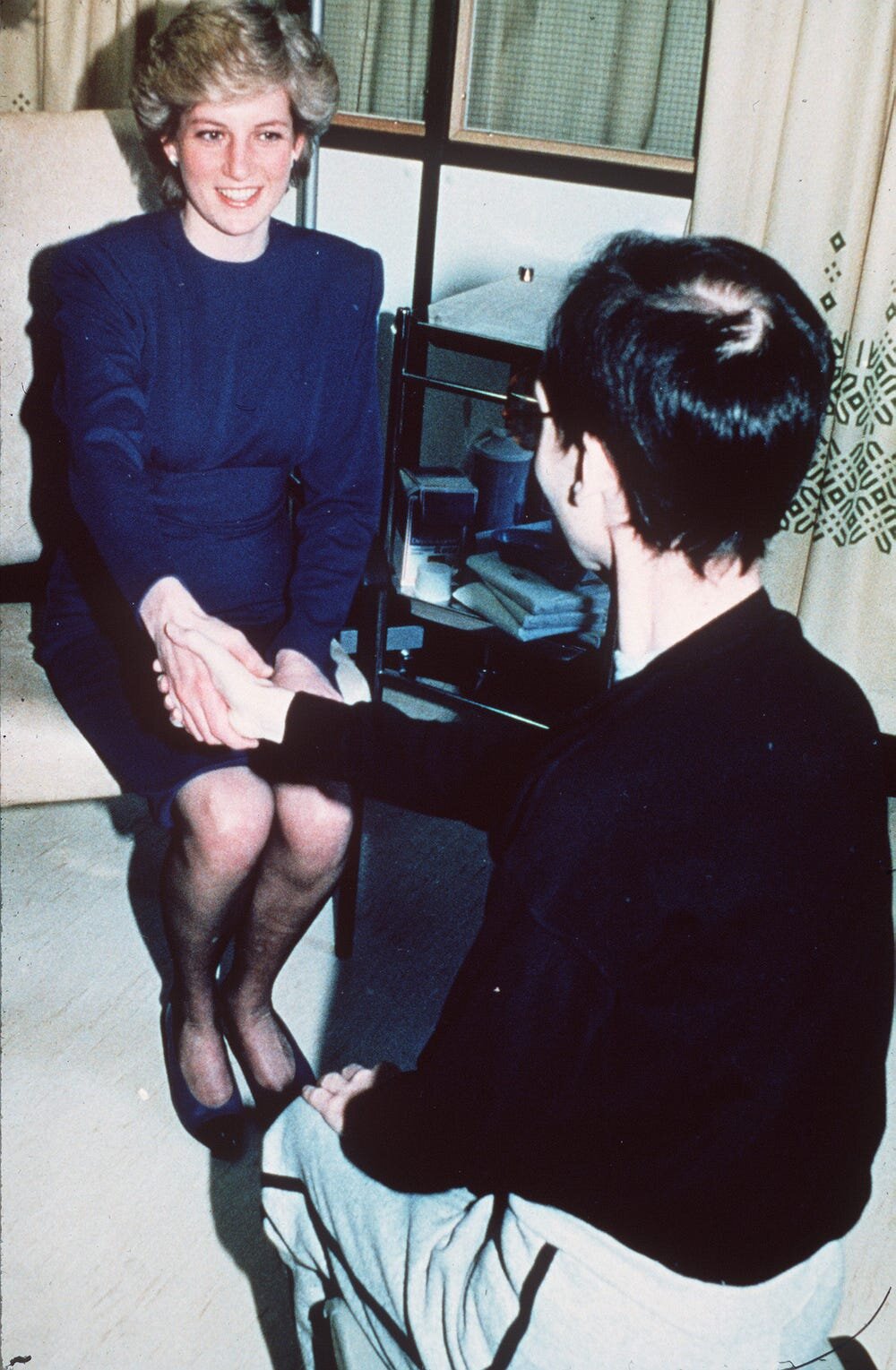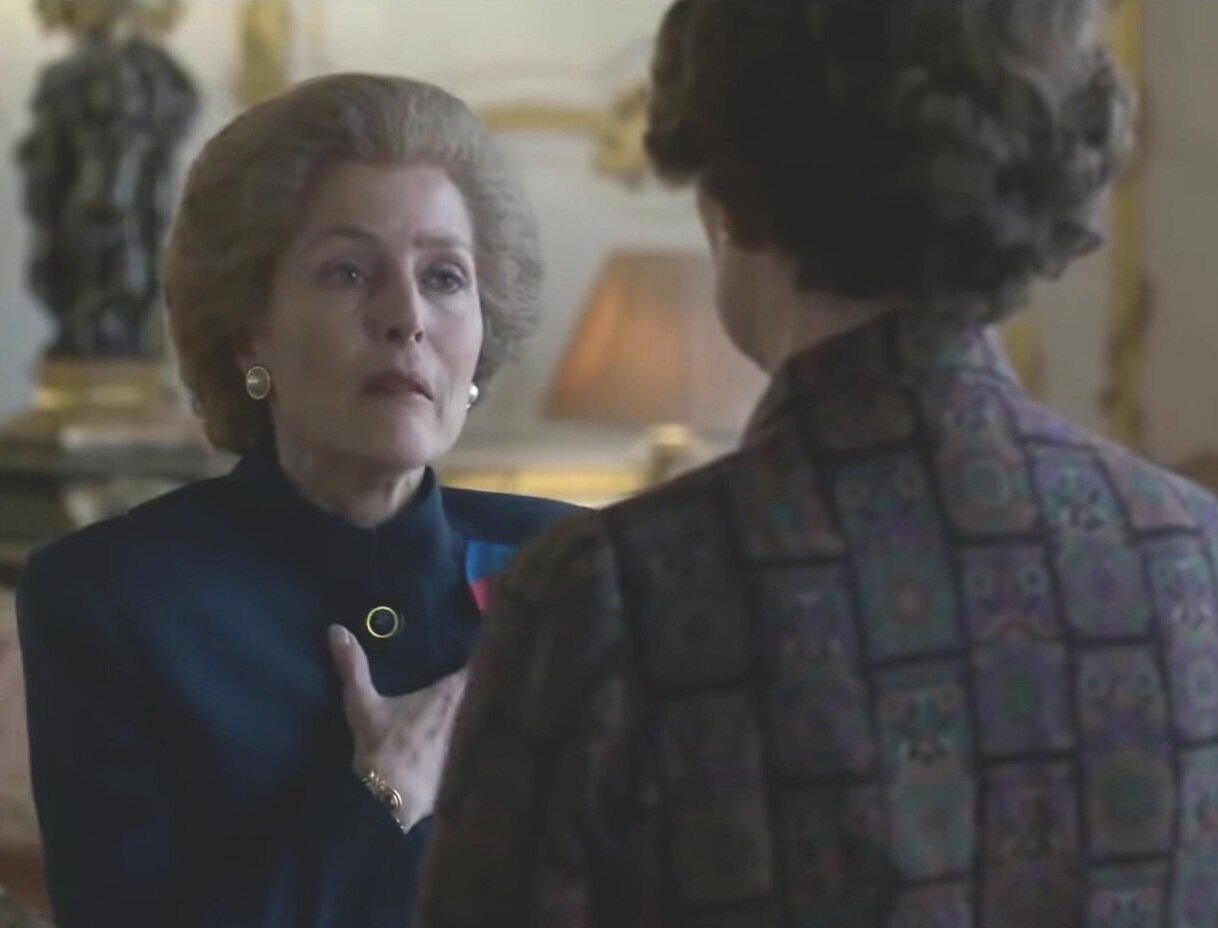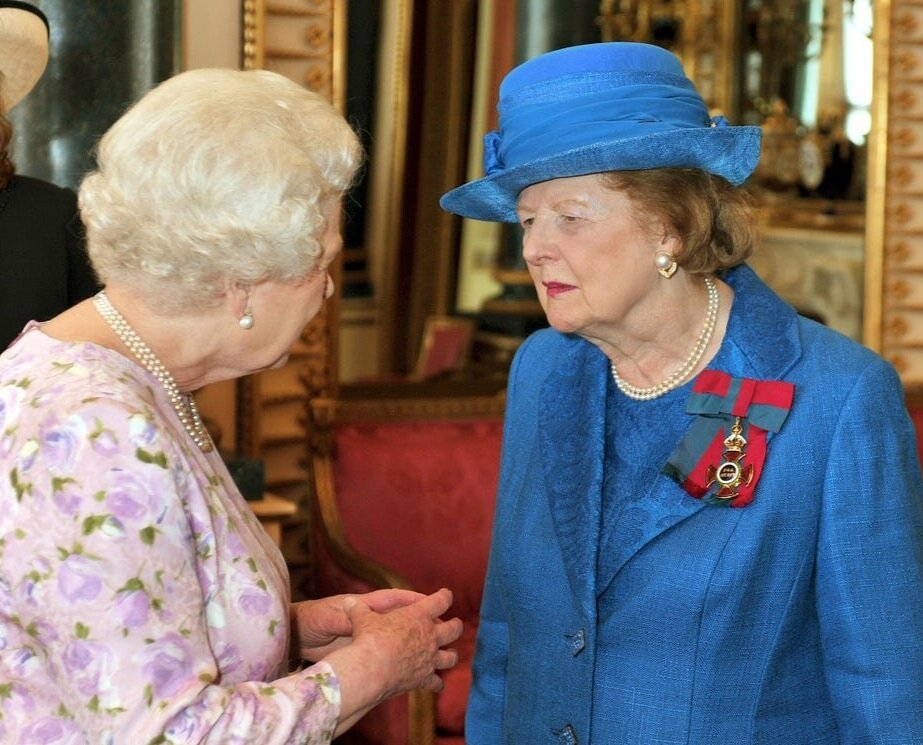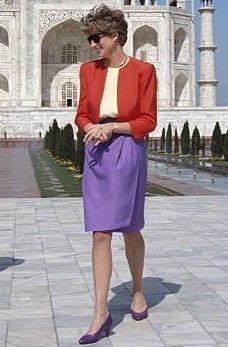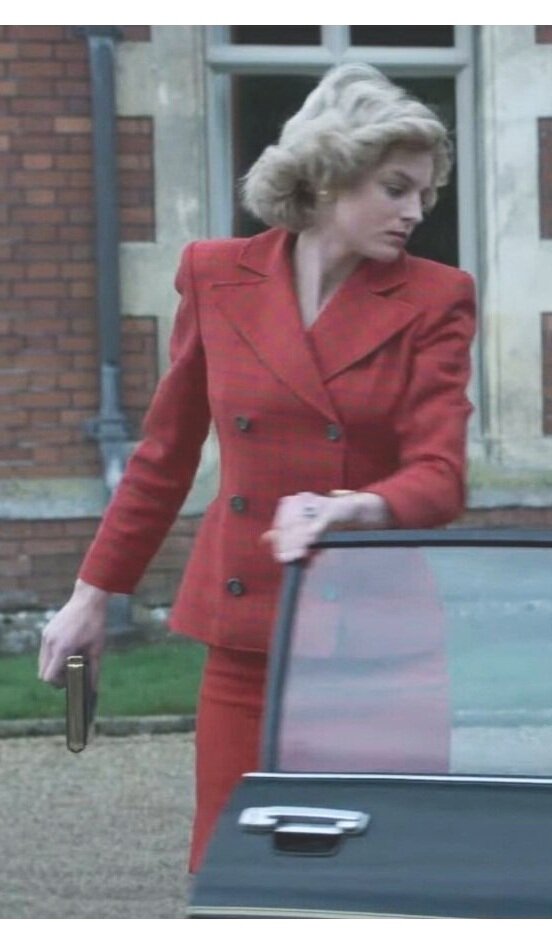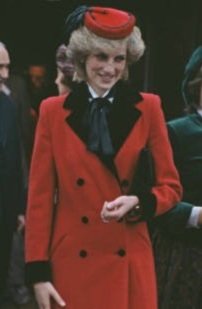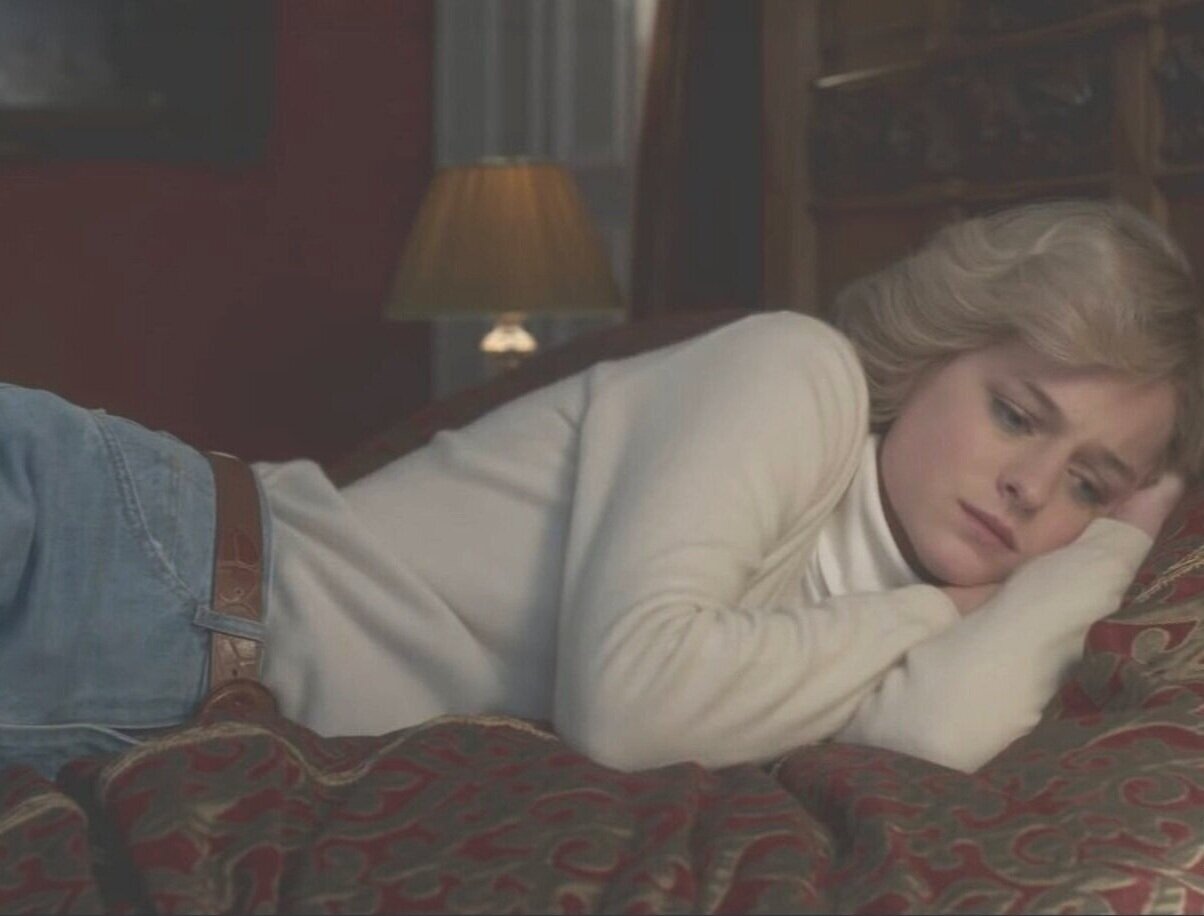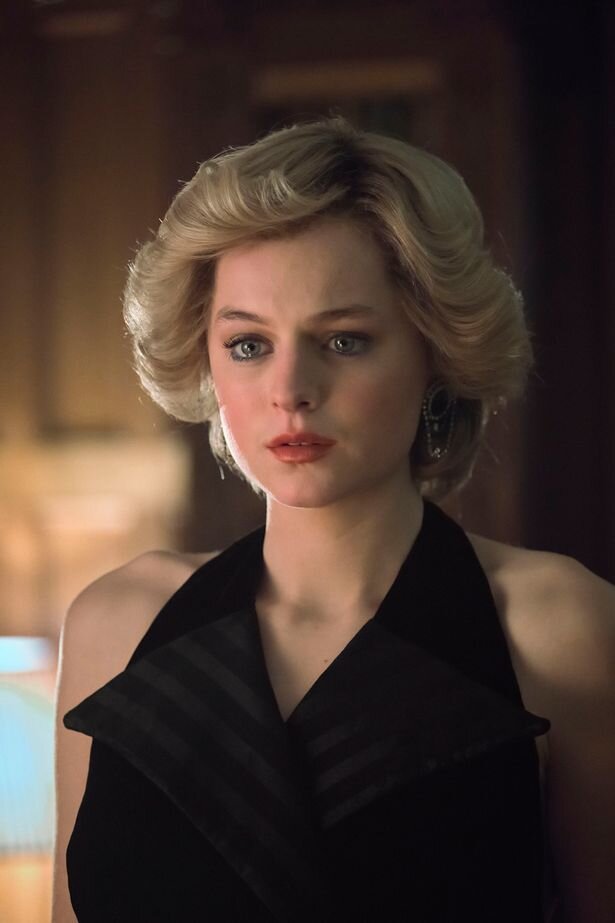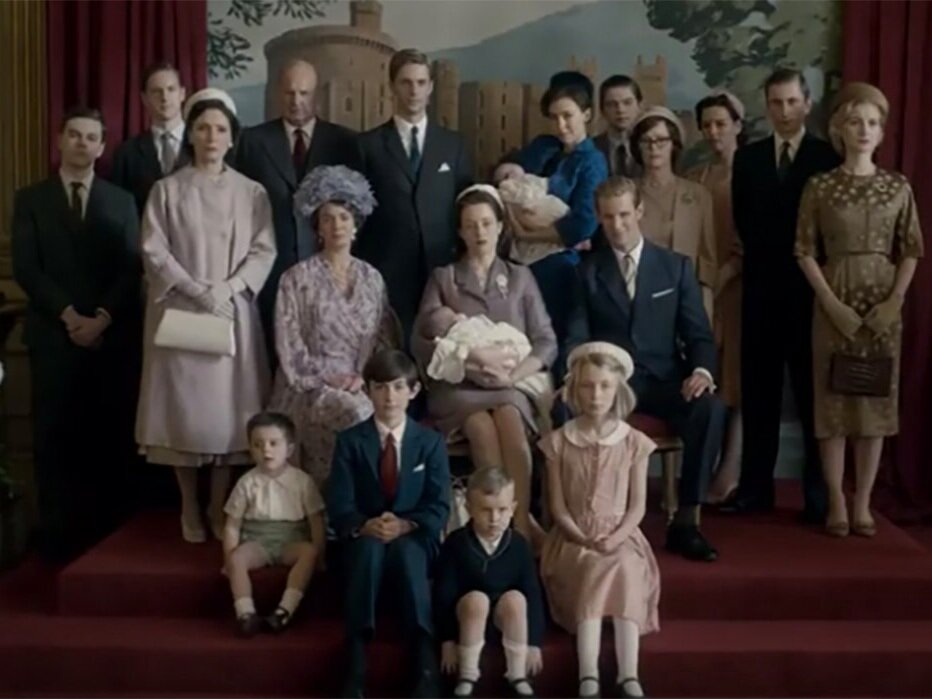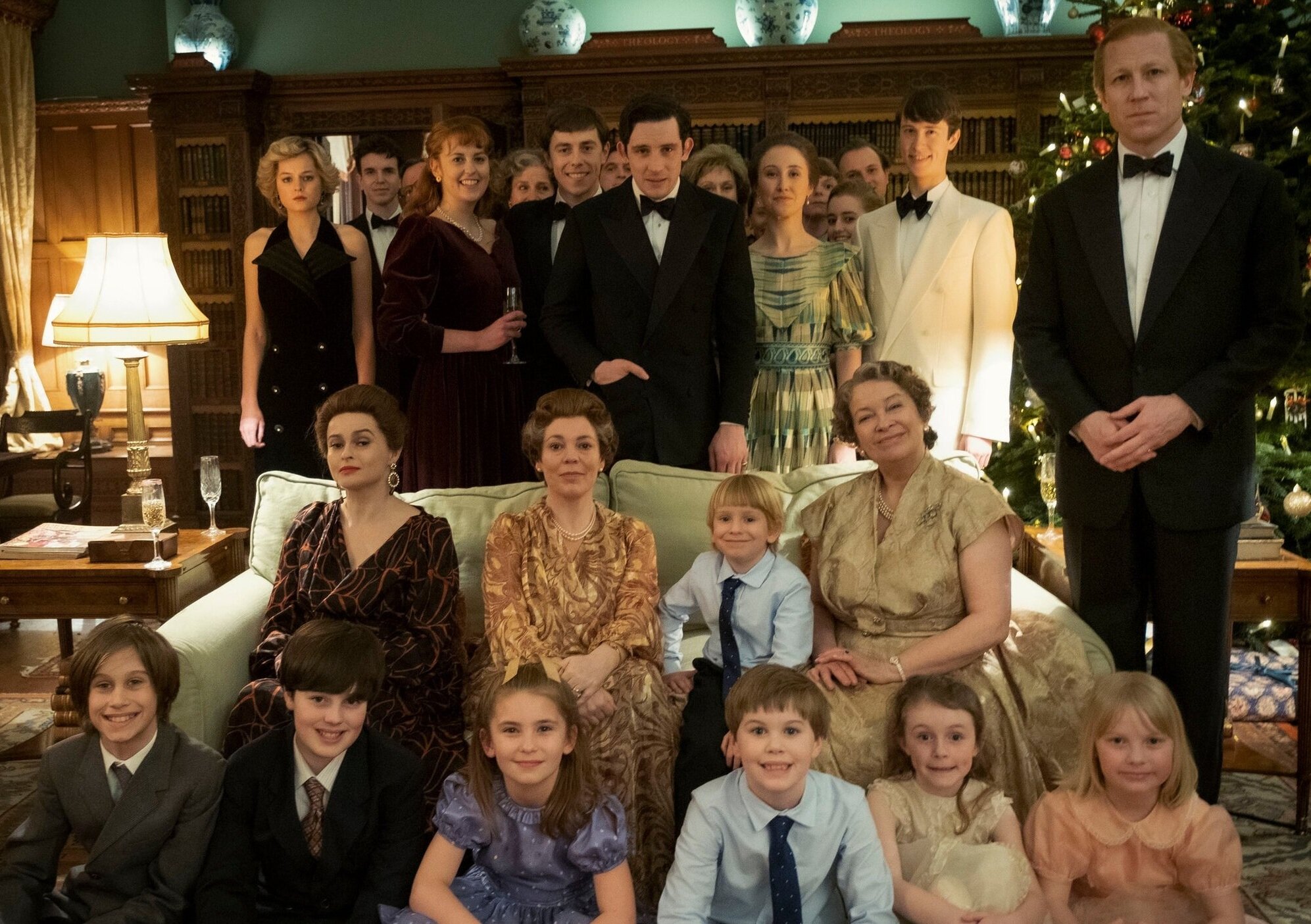Over-Analyzing The Crown: S4E10 War
All My Posts on The Crown
S3: 1 & 2: “Olding” & “Margaretology” 3: “Aberfan” 4: “Bubbikins, 5: “Coup” 6: “Tywysog Cymru” 7: “Moondust" 8: “Dangling Man” 9: “Imbroglio” 10: “Cri de Coeur”
S4: 1: “Gold Stick” 2: “The Balmoral Test” 3: “Fairytale” ( + Cinderella References) 4: “Favourites” 5: “Fagan” 6: “Terra Nullius” 7: ”The Hereditary Principle” 8: “48:1” 9: “Avalanche” 10: ”War”
The Medals, Sashes, and Tiaras of The Crown; Tiaras/Crowns Overviews: Season 1 ; Season 2
I’d like to start off this post with a brief word on the death of Prince Philip, who I’ve written many thousands of words about in the last few years with my blogging about The Crown. It’s a little odd how sad I’ve been over the death of a 99-year-old man I’ve never met, but I’ve always been very fond of Philip. Tobias Menzies’ portrayal of him in The Crown is my favorite character in the whole show; the quietly brilliant Moondust of Season 3 has become my favorite episode over time (I made a bit fun of it at the time as a mid life crisis episode, but I’ve come to appreciate it more with time). And everything I’ve ever read about the real life Philip has always reminded me very much of my own husband, as he too, is a tall, smart, funny, cantankerous man who sometimes says the wrong thing but is at heart, an incredibly kind and generous person who deeply loves and supports his wife and family. And just as Prince Philip was to Queen Elizabeth, Husband John is my rock. Philip was not a saint, and he said numerous problematic things over his time in the public eye. But everything I’ve read about him indicates that he genuinely wanted to do good in the world and supported his family and his country as best as he could. The world feels a bit different now that he is gone.
Now, time to finish up Season 4 of The Crown finally. My apologies that this has taken so long! The pandemic has shredded my ability to focus and writing has become very difficult for me. I also started a new job, which I love, but is requiring a lot of my time right now. Thank you for your patience. I do plan to go back and write overviews of Season 1 and Season 2 at some point (since we won’t be getting any new episodes of The Crown until probably November 2022, at the earliest), but that likely won’t be any time soon.
Left: Geoffrey Howe delivering his speech to Parliament in The Crown. Right: The real life Geoffrey Howe giving his resignation speech (Credit: PA Images).
We get a brief respite from the Charles and Diana drama when we start the day with Sir Geoffrey Howe, going about his regular morning routine before going to Parliament and resigning VERY DRAMATICALLY from his position as deputy prime minister. This was an incredibly important moment that really is seen as the primary catalyst in the end of Thatcher’s time as party leader and prime minister.
Howe had been part of Margaret Thatcher’s government from the beginning, and was her longest serving cabinet minister. We’ve seen him several times before in this season, in pretty much every episode that has focused on Margaret Thatcher, just popping up occasionally to say things.
When Thatcher was elected Conservative party leader, she appointed Howe as the shadow chancellor of the Exchequer (which sounds like a comic book government agency, honestly). In 1979, when MT became prime minister, Howe in turn became the main Chancellor of the Exchequer, and thus was directly involved with many of Thatcher’s economic changes. Early tensions in their relationship began to show when Thatcher told him, “On your own head be it, Geoffrey, if anything goes wrong,” regarding some of his economic recommendations. She later refused to appoint him to her Falklands war cabinet, which caused further issues.
After the 1983 general election, MT appointed Howe as foreign secretary. He served in that role for six years. Howe’s preference for negotiating and patience in foreign affairs clashed with Thatcher’s more strident approach, so there were significant tensions at times.
In 1989, Howe was appointed as leader of the house of commons, lord president of council and deputy prime minister. Despite all the grand sounding titles, this move was seen as a demotion for Howe, who really enjoyed his job in the foreign office and didn’t want to leave.The real Geoffrey Howe’s resignation took place on Nov. 1, 1990. He had initially offered a cautiously worded letter of resignation, which stated “I am deeply anxious that the mood you have struck – most notably in Rome last weekend and in the House of Commons this Tuesday – will make it more difficult for Britain to hold and retain a position of influence in this vital debate.” Later though, angered at the PM’s office’s attempt to characterize their differences as only those of style rather than substance, Howe changed tack and attacked Thatcher ferociously in his resignation speech.
Howe had a reputation as a reserved man, and at one point, Labour Chancellor Denis Healey had described a verbal lashing from Howe as being “savaged by a dead sheep.” Therefore, his ferocious speech against Thatcher took everyone by surprise.
The full speech was quite long, so the version in The Crown is by necessity shortened. However, most of the lines are direct quotes from Howe’s actual speech. You can read the whole thing over here.
One of the only lines that was actually modified slightly in The Crown is actually the most memorable one, the one quoted throughout the papers at the time and quoted in recaps of The Crown episode as well.
In real life, his cricketing metaphor specifically criticized Thatcher’s uncompromising approach to discussions of the development of a European Currency Unit, and how her statements on the topic had hampered the UK representatives negotiating the issue. The Crown changed the statement slightly to be more general about what policies were being criticized.
Both the real life and Crown version start with: “I believe that both the Chancellor and the Governor are cricketing enthusiasts, so I hope that there is no monopoly of cricketing metaphors.”Real Life: “It is rather like sending your opening batsmen to the crease only for them to find, the moment the first balls are bowled, that their bats have been broken before the game by the team captain.”
The Crown: “Increasingly, those of us close to the Prime Minister feel like opening batsmen being send to the crease only to find, the moment the first balls are bowled, that our bats have been broken before the game by the team captain.”
Left: Margaret Thatcher and Geoffrey Howe on The Crown, S4E2 The Balmoral Test. Right: Thatcher and Howe in real life (Credit: Steve Back / Shutterstock).
Philip calls for his wife Lillibet and bursts in on her private meeting with Charles (who’s complaining about Diana seeing James Hewitt again, as his spies informed him at the end of S4E9), and turns on the TV to show the coverage of Howe’s speech and the fallout from it.
While writing this post up, it occurred to me that now that Prince Philip has died, no one calls the Queen Lillibet anymore. There really isn’t anyone around who would even call her by her first name at this point (Charles calls her mummy, at least some of her grand children call her Granny, and she said at one point that George calls her Gan Gan). That’s quite sad.
The Queen looks very done with Charles’ complaining, which foreshadows her outburst at him toward the end of the episode.
Philip describes the situation with Howe and Thatcher as “The Ides of March. It’s Julius Caesar, or should I say Julia Caesar.” This, of course, refers to the assassination of Julius Caesar, dictator of Rome, on March 15, 44 BC during a meeting of the Senate at the Theatre of Pompey in Rome. In Shakespeare’s version of the tale, one of the main drivers behind the assassination was Marcus Brutus, characterized as a very close friend of Caesar who betrayed him for the good of the country. Similarly, Howe had been an ally of Thatcher for over a decade, but resigned and spoke out when he believed Thatcher to be working against the best interest of the UK. His speech has some very Brutus aspects to it, particularly at the end when he states: “The conflict of loyalty, of loyalty to my Right Honourable Friend the Prime Minister … and of loyalty to what I perceive to be the true interests of the nation, has become all too great….In doing so, I have done what I believe to be right for my party and my country.”
The Crown shows Margaret Thatcher going home to 10 Downing Street, going into a room by herself, and crying. In reality, Thatcher gave a statement to the BBC on live TV immediately after Howe’s speech in her usual brusque, defiant manner. This change seems to be part of the season’s occasional efforts to make Thatcher more relatable and personally identifiable. Personally, I’m not sure this worked. Every fan of The Crown I know really hated Thatcher’s character and found her utterly despicable.
L to R: Diana running a race against other mothers (Credit: Shutterstock); Diana with Harry and William at a theme park (Credit: Julian Parker / Getty) ; Diana with William and Harry at school (Credit: Princess Diana Archive / Getty).
Right: Diana in The Crown, sporting a printed sweater.
Far Right: Diana in real life wearing a similarly printed jacket.
Next we get back to the Diana and Charles Saga, as they drive up in separate cars and meet up silently to go cheer on William at a school sport game (rugby? cricket? I don’t know sports). Diana is super enthusiastic at the game, cheering and jumping up and down while Charles is much more reserved.
Diana was indeed a super enthusiastic sports mum at her kids’ school events. She raced in at least two mother’s races, winning both, I believe. She was a very active mother who took her kids to amusement parks, McDonald’s, and all sorts of other places that royal children hadn’t really gone to in the past. We have photos of a lot of that!
L to R: William, Charles, and Harry; William, Harry, and Charles; William and his children George, Charlotte, and Louis; Harry and his son Archie
Diana’s closeness and casualness with her children has been echoed in the photos released of Prince William interacting with his own children, which often have them piled on top of him or hanging off swings and him like any kid would do. (Very few photos have been released of Harry’s son Archie so far, so alas, we don’t have anything like this for him yet).
That being said, although Charles does seem more reserved than Diana was in most photos I can find of him with his sons, there are plenty that show how close they really are. He’s a very different parent from Diana but he was clearly still very involved with his kids.
Honestly, a lot of internal party stuff happens with Thatcher that I’m not going to get into in depth because I don’t actually know that much about the intricacies of British party politics and it would take me many hours to research it all. In sum, Thatcher’s party is no longer backing her, and it becomes clear that they want her to step down as prime minister after over a decade.
Thematically, the sequence in which Thatcher calls in party leaders one by one to speak to them, only to fail to gain their support at the end, is in sharp contrast to a similar sequence in S4E2 “The Balmoral Test,” when she fires a lot of people in her cabinet and replaces them. Years have passed, she’s lost one of her long-standing allies, and she no longer has the power to force her will on her party like she did then.
L to R: Diana in a pink wrap shirt/dress in The Crown; Diana in a pink and red dress in real life (Credit: Georges De Keerle / Getty) ; Diana in The Crown; Diana in a similar plaid coat in real life (Credit: Tim Graham / Getty)
We get a tense scene of schedule comparison and discussion in which Charles, with a table full of men in suits, faces Diana at another table, with only two men at her side. I really have no idea whether this sort of thing actually happened or not, but according to Diana’s interviews for Diana: Her True Story (by Andrew Morton, which is discussed in more depth later on in the post), by this point, Charles was heavily gaslighting her and trying to convince her she was mentally ill, so it’s quite possible.
Do we know if Charles really had a problem with Diana going to New York alone? We do know he was rather gaslighting her about her mental health at this point. she mentioned this extensively in in her own words.
Diana talking with her advisor? Secretary – in flashback in that graphic sweater – saying that Charles tells everyone that she’s mad, and she’s starting to feel mad, and worried that she’s going to fall flat on her face.
The show portrays Margaret Thatcher asking the Queen to dissolve parliament in order to keep her seat. The Queen refuses, noting that although the PM technically has this power, “Power is nothing without authority,” and notes that her cabinet and party is against her. She also points out that polling indicates that Thatcher’s party would not win a general election if it were called today, indicating that the country was against her.
Then they have a wonderful, heart-rending exchange that really underlines Thatcher’s all or nothing way of thinking:
Queen: There is power in doing nothing.
Thatcher: I will have nothing.
Queen: You will have your dignity.
Thatcher: There is no dignity in the wilderness.As moving as this scene is, it’s completely invented. A historian said to History Extra that the entire scene was “a colossal invention.”
“This is total nonsense. There was no meeting with the Queen after Thatcher’s ministers told her to go. Actually, this distorts the true drama of events, which is that in the night her ministers told her to go; then the next morning they came to cabinet and she told them she was resigning, reading the statement in tears; then, when that was over, she went to the Commons and destroyed Neil Kinnock in probably her most famous parliamentary performance. There was no time for her to go to the palace amid all that. Above all, it’s utterly unthinkable that Thatcher would have asked the Queen to dissolve parliament. It’s such a massive distortion of what happened, and of her character and her relationship with the Queen, that I’m amazed it’s in the series.” (Source: History Extra).
L: Diana wearing the famous ivory dress and jacket in The Crown; R: Diana in real life (Credit: Tim Graham / Getty).
L: Diana wearing pastel colors at Harlem Hospital in The Crown;
R: Diana wearing a similarly colored jacket in real life (Credit: Mirrorpix / Getty).
Diana’s New York Trip really came about because of her patronage to the Welsh Opera, which was performing at the Brooklyn Academy of Music in its first season of opera. The planners for the event knew that Diana’s presence at their inaugural performance of Falstaff would be a huge boon to their fundraising. And so it was! The $2,000 tickets to the gala sold out very quickly once Diana’s attendance became known. The post-opera dinner for 850 was the event featured in the show when Diana appeared in that famous ivory gown and jacket. (Source: Town and Country)
The preparations required for Diana’s visit to the gala weren’t covered in The Crown, but they were very in depth! Plans to have balloons at the champagne reception were squashed by the State Department, as apparently a popping balloon sounds too much like gunfire; since there were protestors at the event (from the Committee for Legal justice in Northern Ireland and the Irish Northern Aid Committee), they apparently didn’t want any risk of confusion.
Throughout the New York trip scenes, Diana wears a lot of clothes that are heavily inspired by her real life outfits, but not exact replicas, until she gets to the opera dinner night and comes out in that famous sparkly ivory dress and jacket.
L to R: Diana hugging a child with AIDS in The Crown; Diana holding a child with AIDS on her real life visit to Harlem Hospital.
Right: Diana’s 1987 photograph with a patient with AIDS, kept anonymous at the time but later identified as Ivan Cohen. The stigma against AIDS was so strong that Ivan was the only person willing to take the picture with her.
(Credit: Anwar Hussein / Getty)
[more information below]
Diana is shown visiting the pediatric AIDS unit at Harlem Hospital, where she is told that the children desperately need foster parents, but people are too scared to take them on. She ends up hugging a little boy to the gasps of onlookers. At the time, this was an incredibly important and momentous occasion. This did happen on Diana’s trip to New York in 1989, but Diana had actually already been involved in fighting the stigma against AIDS for several years already.
She was first photographed shaking hands with a patient with AIDS in 1987; she specifically refused to wear gloves. This was a specifically planned and carefully coordinated photo. A letter writer who identified himself as the best friend and executor of Ivan Cohen, the man in the picture, said: “Ivan was the only person in the special wing of the Middlesex Hospital willing to be photographed with the princess and only on condition that he was photographed from behind. The stigma associated with Aids is difficult for an outsider to gauge in retrospect and Ivan certainly saw it as such. She was indeed instrumental in highlighting the incongruous attitude.” (Ivan was kept anonymous when the photo was first published). (Source: Philip Chklar’s letter in The Guardian).
An article from Insider explains:. “AIDS was first identified back in the early 1980s. By 1983, scientists at the CDC had already concluded that the disease could not be transmitted through casual contact, but the public had become terrified. Reports from that era tell heartbreaking stories of AIDS patients — even children — who were shunned and stigmatized because of the disease. In 1985, the Los Angeles Times conducted a poll and found that 50% of respondents favored quarantining people with AIDS. When she shook the hand of an unidentified AIDS patient, Diana used her public platform to challenge that irrational fear.“ (Source: Insider).
Her actions at the hospital years later were incredibly important as well. The New York Times reported that while at the pediatric AIDS unit, she stroked five babies and scooped up a seven year old boy and cuddled with him. The pediatric director at the hospital, Dr. Margaret Heagarty, said, “Your presence here and in Great Britain has shown that folks with this disease can be hugged, can be cared for.” (Source: New York Times, 1989).
Later, in 1991, Diana spoke at the Children and AIDS Conference, specifically saying “HIV does not make people dangerous to know, so you can shake their hands and give them a hug. Heaven knows they need it. We all need to be alert to the special needs of those for whom AIDS is the last straw in an already heavy burden of discrimination and misfortune." She continued to speak out and work in AIDS activism throughout the 1990s, using her fame to bring attention to the issue and raise money for charities. (Source: Elle)
In the show, Diana is shown wearing a brightly colored suit at the hospital, while in real life, she wore red. This change of costume seems to evoke Diana’s maternal connection with children, as rainbows and lots of bright colors together are often associated with childhood.
Camilla’s conversation with Charles after seeing the news coverage of Diana’s visit to New York is imagined (as pretty much every private conversation in this show is), but seems to fit with all the descriptions I’ve heard of Camilla personality. She’s calm and logical and states her concerns simply and practically, namely, that Camilla would lose in a popularity contest against Diana. The show then calls back to S4E3 Fairytale with the line, “To be a protagonist of a fairy tale, you have to be wronged, a victim – in the narrative of laws of fairy tales vs. reality, the fairy tale always prevails.”
Note that they’re both in blue for this conversation. Charles has been shown wearing a fair amount of blue throughout the season. Diana was seen in a lot of blue in her early appearances, and a few times in Australia, but has pretty much stopped wearing the color completely in the last few episodes as she gives up on her relationship with Charles altogether.
Charles tells Camilla that she’s his one true love, but she says wryly that she’s just the mistress, and notes that her great grandmother was his great great grandfather’s mistress. In real life, Camilla commented on this fact when she first met Charles at a polo match in 1970, saying “My great-grandmother was the mistress of your great-great-grandfather. I feel we have something in common.” (Source: Town and Country). You can learn more about their relatives in this article on Alice Keppel and Edward VII in Town and Country.
Sidenote: Putting that all down in writing really brought home the fact that in the timeline of The Crown, Charles and Camilla really have been in a relationship on and off for twenty years - and even when they weren’t romantically involved, they were very close friends. Diana had only even really known Charles for about 10 years, which was about as long as they’d been married.
Credit: Royal Collection Trust
L: The Queen awarding the Order of Merit to Margaret Thatcher in The Crown. R: The Queen and Margaret Thatcher at a meeting of the Order of Merit in 2009 (Credit: John Stillwell).
After Thatcher is essentially forced out of office by her party, the Queen asks her to come visit. They’re both in somber colored clothing for this scene, which reflects the sadness of their conversation, but Thatcher is still in her favorite color - blue.
The Queen frankly says, “I was shocked by the way you were forced to leave.” She then acknowledged that although many people focused on their differences (which she described as lazy), but often overlooked the many things in common: their generation, Christianity, sense of duty, worth ethic, and a sense of devotion to their country.
I think the show did its best to show how complicated and sometimes fraught the relationship between the Queen and Thatcher was, but that under it all, it really was based on a mutual respect. As the Queen points out in the show, Thatcher definitively changed the country during her tenure (Elizabeth judiciously avoids characterizing those changes as good or bad).The scene ends, and the show says goodbye to Margaret Thatcher, with a scene in which the Queen gives Thatcher the Order of Merit. The Queen gave Thatcher the order of merit about one month after the end of her time as prime minister. Five years later, the Queen made Thatcher a Lady Order of the Garter, the UK’s highest order of Chivalry, making her the first non-royal woman in the order.
The show doesn’t mention this at all, but even when Thatcher stepped down as PM, she still served in the House of Commons in the backbenches until the 1992 general election, when she retired. At that point, The Queen, upon recommendation of prime minister John Major, awarded Thatcher a life peerage (which meant her title could not be passed down to her children). This made Thatcher a Baroness and put her in the House of Lords.
Another item the show doesn’t bother to include: at the same time Thatcher was given the Order of the Merit, her husband Denis was made a hereditary baronet at the same time. This remains the only baronetcy granted since 1964.
As the dialogue notes, only the sovereign can give the Order of Merit, without input from anyone else (although a few prime ministers have tried to suggest people over the years). Only 24 recipients are allowed to have it at any one time. When a recipient dies, the sovereign personally meets with their next-of-kin, who gives the badge back. So - it’s not even that there are just 24 recipients, there are just 24 /physical badges/ to even award!
Any citizen of any commonwealth country is actually eligible, and the award has been given to several non-Englishmen. It is provided for “exceptionally meritorious service in Our Crown Services or towards the advancement of Arts, Learning, Literature, and Science.” Recipients also receive a commissioned portrait, which becomes part of the Royal Collection Trust.
Current members of the order of merit include playwrights, philanthropists, inventors, musical conductors, museum directors, members of the Royal Family, and former politicians. Other Order of Merit recipients previously seen in The Crown include Winston Churchill (prime minister, seen in S1, with brief appearances in S2 and S3), and Graham Sutherland (the painter of Churchill’s portrait in S1), Earl Mountbatten (S1-S4), Prince Charles (S1-S4), Prince Philip (S1-S4),
L to R: Diana on The Crown wearing a purple and red coat; Diana in real life wearing purple and red (Credit: Princess Diana Archive / Getty); Diana on The Crown wearing a red suit ; Diana in real life wearing a red coat with a similar silhouette (Credit: Princess Diana Archive / Getty).
During her fight with Charles after her New York trip, Diana wears a purple and red coat, even though she is in her own home (Charles drives up to meet her there; she was already there waiting). The underlying meaning of the coat here seems to be that she’s ready to go. She wants out of this marriage.
I’m not going to cover this fight in depth because there’s no way to know what Charles and Diana personally said to each other while alone. However, I will say that the character of Charles in this scene is just the worst asshole. He’s mad at Diana for….being kind to children with AIDS? She hurt Camilla by…being a good person? He calls her acts of charity “antics” and said her motivations were selfish which…what? Even if they were, it’s clearly doing a lot of good in the world and isn’t just about her.
Diana referring to herself as “the mother of your children” to Charles really seemed to set him off; Diana said in her interviews for “Diana: In Her Own Words” that this sort of reference to herself did indeed seem to piss him off quite a bit. “That always makes him slightly twitch, when i say ‘mother of your children’. He hates being made aware of it.”
Charles ends the fight, in which he openly declares that Camilla is his priority and who he thinks about at all times, by saying he was forced into the marriage and if Diana has problems with it, she should go complain to his parents, not him.
After the fight, Diana goes to the bathroom to the retch but ends up stopping herself with great effort. This seems to refer to Diana’s eventual recovery from her bulimia, which in real life, took a lot more therapy and medical help than the show seems to imply. In her interviews for Diana: In Her Own Words, Diana attributed her recovery really starting with a friend calling her up with some brutal tough love, basically saying, if you don’t tell your doctor about your bulimia in the next hour, I’m going to tell the whole world. That really did seem to work though, as Diana started seeing a “shrink” and she really got the help she needed to conquer her eating disorder.
The montage scenes at Christmas feature a lot of dead animals and hunting. Back in S4E2 The Balmoral Test, there were all sorts of animal and hunting allusions relating to Diana and Charles. This montage literally includes a scene in which dead pheasants are getting stabbed on hooks. The allusion here is clear - both Charles and Diana feel trapped in their marriage with no way out.
In a call back to Philip and Diana’s “outsider” connection in S4E2 The Balmoral Test, Philip notices that no one is really talking to Diana and smiles at her in sympathy.
The song “Baby it’s cold outside” plays in the background. This is a 1944 song that, in the context of its time, is about the beginning of a relationship and the first sparks of sexual attraction, but which is commonly read today as about rape; Rolling Stone has a pretty good overview of the various articles and viewpoints on this song that’s worth an in-depth read. Whatever your opinion of the song, its use here in the show simultaneously establishes the holiday setting and emphasizes the uneasy disconnect between the happy family setting and Charles and Diana’s unhappiness.
Note: The Queen puts her hands in her coat immediately when Diana walks up, as if to avoid a hug. This seems to call back to the end of the Australia episode (S4E6 Terra Nullius), when Diana hugged Elizabeth and Elizabeth was Visibly Uncomfortable and got out of it as soon as she could.
L to R: Diana in a white sweater , jeans, and brown belt in The Crown; Diana on a 1997 visit to Bosnia (Credit: Tim Rooke / Shutterstock); Diana in a velvet halter dress in the last shot of Season 4 of The Crown; Diana in a 1997 Mario Testino photograph taken to support her charity dress auction.
I gotta say, although I dislike how the Queen’s character in the show continues to dismiss the serious, deep issues in Charles and Diana’s relationship that are harming them and bringing out the worst sides of both of the Waleses, it was very satisfying to watch her explode at her son telling him that she KNEW he was betraying his wife, and that both of them were spoiled immature people who were constantly complaining.
The argument ends with the Queen saying sharply, “If one day you expect to be king, might I suggest you start behaving like one.” This seems to be a slight allusion to the many surveys of UK citizens over the past couple decades that often indicate a significant portion of the population wants the crown to skip Charles and go straight to William. Charles’ poor treatment Diana remains something people still is commonly listed as a major reason. This continues even now. Realistically, Charles is going to be king no matter what people think. He’s already taken over a significant amount of the monarch’s duties from his mother anyway. (Source: Daily Beast for the most recent survey, but also there are SO many other articles over the years I could reference)
The dead animal symbolism continues with lots of dead stags, and is emphasized when Philip, who made the hunting connection with Diana in episode 2, goes to speak to her as an outsider to an outsider.
Diana upstairs in a white sweater and jeans lying on bed. This very simple outfit really evokes an outfit Diana wore in January 1997 on a visit to Huambo, Angola, when she walked across a minefield in one of the most public and impactful humanitarian acts of her life. Although the shirt style is slightly different, the jeans, belt, and shirt color are almost identical, and I have to believe that that’s intentional reference. In 1997, less than a year before Diana died, she was newly divorced, free from Charles, and really coming into her own in terms of pursuing her own humanitarian interests and living her own life. This costuming choice feels like a deliberate reference to Diana’s changing frame of mind, in which she’s embracing her humanitarian work and working to really step away from her unhappy marriage. You can read all about the impact of that minefield walk, and her son Harry’s work to carry forward that legacy, in this deep dive article from Time.
The simple starkness of the outfit also underlines her state of mind. As she says to Philip, she feels like she’s in “a cold frozen tundra, " and “an icy dark loveless cave with no light – no hope anywhere – not even the faintest crack.” A white sweater feels like a pretty good “frozen tundra” reference.
I’m not going to get too into the conversation between Philip and Diana, but I did want to address one item. Philip says, in response to Diana’s words about wanting to leave the family, “I don’t see it ending well.” Lots of viewers have read this as a threat and an allusion to the many many conspiracy theories that the royal family had Diana killed. And this show is into sensationalism at some points so - yeah. That’s probably intentional. But I think the words can also be read as the character of Philip being protective of his family and the monarchy.
Also, just from a practical standpoint, this statement may refer to the fact that leaving the royal family would be pretty terrible press for Diana. Diana actually knew this herself. As the foreword to In Diana: Her True Story in Her Own Words (based off of secret interviews with Diana) says, “If she had just packed up her bags and left, the public and media, who firmly believed in the fairytale, would have considered her behaviour irrational, hysterical, and profoundly unbecoming….Not only did she consider herself to be a prisoner trapped inside a bitterly unfulfilled marriage, she also felt shackled to a wholly unrealistic public image of her royal life and to an unsympathetic royal system…It gradually dawned on her and her intimate circle that unless the full story of her life was told, the public would never appreciate or understand the reasons behind any actions she decided upon.”
The book that resulted from Andrew Morton’s secret interviews with Diana became an overnight bestseller in 1992 and really broke the stories about Charles’ relationship with another woman and Diana’s own bulimia and suicide attempts. The book and its author were highly criticized at the time, as he certainly couldn’t reveal his source, and plenty of people thought the stories were invented. The Sunday Times was the only paper that agreed to serialize the book, and only then after one of Diana’s friends privately told the editor that the book was true. Stores and people even boycotted it …until it became apparent that the stories were true.
Diana’s strategy worked. The first excerpt from the book was published on June 7, 1992. Only a few months later, in December, the prime minister announced that Charles and Diana were to separate. They wouldn’t officially divorce until 1996.
The saga of the creation, publication, and reception of the book (which I’ve used extensively as a resource throughout all these posts), as well as Morton’s decision to publish transcripts of the interviews after Diana’s death, is incredibly dramatic and interesting and The Crown Season 5 better cover it. It’s way too damn fascinating to leave out. Anyway, you can read a lot more about the book in this article from The Crown Chronicles.Note: Obviously the book is, obviously, from Diana’s viewpoint and bias, and I believe the original version left out any mention of her own affairs (which was remedied in later editions). Charles would later tell his own story in a 1994 authorized biography by Jonathan Dimbleby, which “says his overbearing father forced him into a loveless marriage with Princess Diana.” (Source: AP News). I haven’t read this book yet, as I frankly generally read books in ebook or audiobook format these days, and it’s just not available in either of those formats (In contrast, Morton’s book about Diana is available in all the formats and has been re-issued several times over the last few decades with new material). There are over 100 used copies of it available for only $2 on Amazon though, so I’ll probably get it here soon. You have to feel that out there somewhere, Diana is laughing about that.
L to R: The last scene of The Crown Season 2; the last scene of The Crown Season 4.
Top: The last scene of Season 1 of The Crown; Bottom: The last scene of Season 3 of The Crown. —>
Diana’s final outfit in the season is clearly based off of a famous green velvet halter dress. Diana was photographed in this dress by Mario Testino in 1997 to support a huge auction of her dresses for charity. This picture was published in the July 1997 issue of Vanity Fair, and from what I can tell, were almost instantly declared iconic. (Source: Vanity Fair).
So essentially, the last two Diana Season 4 costumes are near-replicas to famous outfits worn by the real life Diana in the year she died. That’s some serious foreshadowing. Season 5 is probably going to be really dark, y’all.That charity auction by Christie’s sold off 79 of her dresses and raised $3.25 million for cancer and AIDS charities. Even at the time, this auction was seen as signifying a change in her life. The New York Times said, “The clothes trace her metamorphosis from frilly princess through the ‘Dynasty Di’ years to the woman on her own in the sleek column dresses of the 1990's.” This quote really summarizes a lot of Diana’s own fashion evolution and what we’ve seen in terms of changes in character Diana’s fashion and emotional changes as well. She started out in very frilly, bright, almost childlike outfits (so much yellow and green! lots of hopeful Spring-y colors), which grew more adult and and darker over the season, and now in the last two scenes of the season, she’s in her simplest, starkest looks.
(Also of interest - the NYT article notes that Joan Rivers said, the auction would be fun, but “it's going to be even more fun next year to go to all the bar mitzvahs and see'' who was wearing Diana's castoffs.)
I really love that the seasons’ ending scenes so far have really mirrored each other. Season 1 and Season 2 went out with pictures of the Queen alone, in her Queen role. Season 2 and 4 went out with pictures of the Queen with her family, in her mother and grandmother role. The big family picture is also just such a great way to bid farewell to the actors who played those characters for that two year cycle.
Season 1 ends with Elizabeth in her crown posing for a portrait around November 1955.
Season 2 closes with Elizabeth posing with her extended family at the christening of her youngest son Edward, around April 1964.
Season 3 ends with Elizabeth in her carriage for her Queen Elizabeth’s Silver Jubilee in June 1977.
Season 4 closes out with Elizabeth at Christmas with her entire family, December 1990.
And on that note: I’m finally done with over-analyzing Season 4 of The Crown. Thanks everyone!

